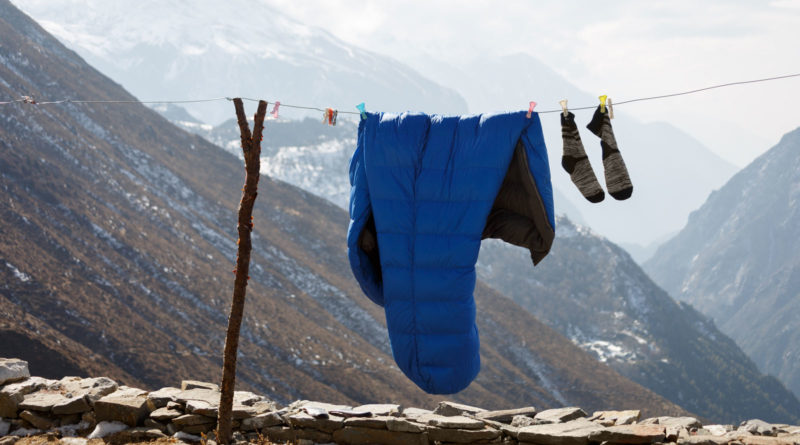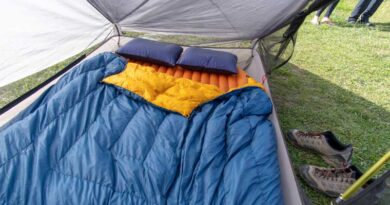How to Prevent Condensation on a Sleeping Bag?
Sleeping bags are among the most important essentials when it comes to camping. They are so popular because they are specifically made for camping. It is well known that a dry sleeping bag is good for staying warm. If the sleeping bag gets wet, it causes problems like losing its ability to provide warmth. This problem is even more significant when you have a down sleeping bag. Wet weather conditions and condensation on the sleeping bag make it wet.
This article is about preventing condensation between sleeping bags. If you want to learn about reducing tent condensation, I have written a whole article on it so do check it out.
What Causes Condensation?
Condensation occurs when vapors in the air come in contact with a cold surface and become liquid due to the temperature difference. Each morning, however, condensation is caused by what’s known as the dew point where air becomes cool enough that it becomes saturated with vapors. These vapors then condense into liquid when they come in contact with cold surfaces due to the temperature difference.
The dew point is the real problem when it comes to keeping the bag dry. While camping, condensation occurs due to many reasons:
- After a hot and humid day when the night becomes cold, it causes the water to accumulate on the surface of the bag.
- Moisture also accumulates from breath and sweat. We exhale around 1 liter of water each night whereas sweat also contributes to condensation forming on the bag’s surface.
- A crowded tent causes the temperature to rise in the tent while the air outside is cold. This temperature difference causes condensation. Furthermore, as mentioned above, all these people sweat and also exhale water through breathing.
- Cooking and boiling water in the tent also causes condensation in the tent.
- Camping near lakes and other water bodies also causes condensation.
- A closed tent with no ventilation also causes condensation as there is vapor buildup in the tent.
Synthetic Sleeping Bags Prevent Condensation
Synthetic bags are almost always better when it comes to camping in wet conditions. Down sleeping bags are made of feathers that contain air pockets for insulation. When a down sleeping bag gets wet, it absorbs water and becomes compressed losing its ability to provide warmth. Down bags are also slow to dry making them much harder to manage in wet conditions. But they also have some advantages; they are lightweight and much more durable than synthetic sleeping bags.
Synthetic bags are made of tightly wound plastic fibers which makes them much more water-repellent than down bags and also easier to dry if they get wet. Hence, they are warmer in wet conditions due to their water-resistant nature. They are also cheaper but they are heavier, harder to pack, less durable, and less warm.
A Different Perspective…
In an unpopular opinion, a good bag does not protect you from getting wet because it would block moisture and sweat from evaporating. A sleeping bag gets wet sooner inside the tent because of the microclimate in the tent than in a hammock or under a tarp.
Water-resistant products tend to cause problems in the long run. A bag with a water-resistant membrane makes it difficult to evaporate body sweat and moisture from breath causing condensation from your own body.
Sleeping bags with membrane coating are fine for short trips with no place to dry. That way they won’t have enough time to collect too much moisture from the environment, instead, they will absorb sweat.
Bags with no coating or membrane to repel water will provide more warmth on longer expeditions. After you get inside the bag, the moisture simply evaporates under the influence of the body temperature in about 20 minutes.
Covering a down bag with a synthetic bag can prove to be more effective. A Dew point appears on the outer bag and the inner bag dries freely. The synthetic doesn’t even have to be expensive or a heavy-weight high-insulating one. This is a practical solution that works in every situation with a little trade-off of space and weight, but not too much.
Cover your Bag
A bivy sack or bag cover protects from rain and morning dew. Many campers replace a tent with a bivy sack which is a practical option for a long-distance backpacker who wants to stay lightweight along with weather resistance. Make sure that the cover is breathable or you will build up internal condensation. If you are short on options then raincoats can also be used to protect from condensation.
Mind your Tent
There are many things while you are setting up camp and in the camp that contributes to reducing condensation. You must first choose your pitching spot carefully. Try to avoid water bodies like lakes and ponds and also avoid hollow spots where water tends to gather and the air becomes cooler.
When pitching the tent, pick a spot with a light breeze, and don’t completely hide behind rocks or other structures. In a light breeze, pitch the tent such that the main opening of the tent faces the breeze, otherwise, choose a spot where a gentle breeze passes through the tent.
Ventilation is very important if you want to reduce condensation. The air in the tent is more humid than in the surrounding so it becomes important to replace that air with less humid air outside the tent. Open air vents unless it’s raining. You might be tempted to close the tent as much as possible on a cold evening but that is not a good idea. Keep the tent ventilated. If you have issues with the cold, pack proper warm clothing.
Cooking inside the tent is also a huge contributor to condensation. Do not cook in the tent. Boiling water causes a lot of condensation. You should cook outside the tent unless it’s raining. If it is windy, then cover the gas cooker using rocks or a seating pad, etc. If you can’t cook outside, then cook under the flysheet but as far from the tent opening as possible. Similarly, if you have wet clothes or gear, do not store them inside the tent. Try storing them outside the tent under the flysheet.
Hang your Bag Outside in the Morning
If you wake up in the morning and find water beads on the sleeping bag then that means the water-repellent membrane of the bag is working. You will have an impulse to wipe the water off but avoid that urge. Wiping will cause wetness through the water-repellent barrier. Hang the bag out to dry if you are in a dry and windy area. If you think you will be in an area where the weather won’t be dry, then carry a sponge to absorb water off of the surface of the sleeping bag before storing it in the backpack.




